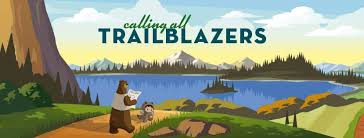
Get your FREE 30-day trial.
Please complete all fields.
“Did I just make my biggest career mistake?” That's what I asked myself as I navigated through a sea of hundreds of Salesforce new hires, searching for my seat in orientation.
Joining Salesforce's Pricing Strategy team was one of the hardest career decisions I made. My role had never been focused on a critical, but singular, revenue lever: pricing. Before, I'd always been attracted to broad positions with general charters. However, as my Salesforce orientation rolled on, I became much more comfortable with my decision. Speaker after speaker shared how they had blazed their own trails to contribute and make Salesforce their own.
In this post, I will share how I uncovered an opportunity to improve how Salesforce prices its deals, while creating a project that I absolutely love to work on. I realize that some of the anecdotes are situation-specific, but I hope there are nuggets here that will help others pursue their passions and create new opportunities at their companies.

Fast forward two years from that first day of orientation, and I had learned from the best at Salesforce about how to price and package new products. The combination of executive-level interaction, complex problem solving, and the opportunity to impact the business in a meaningful way fulfilled me. However, I started to feel a strong pull to build something new. In the long-term, I wanted to sit at the intersection of pricing strategy and product management. There weren't any roles that fit this set of responsibilities, so I set off to blaze my own trail.
When I looked around at the different areas where I could add more value, I saw a ton of untapped deal data that we weren't currently using to inform pricing. In addition, I knew I had experience building analytical recommendation engines. So why not apply this experience to improve pricing guidance at Salesforce? Others in the company had similar ideas and studies have shown that price optimization can drive 3-8% profit margin uplift.
But why hadn't Pricing Strategy already addressed this opportunity? The short answer to this is that it's hard. The longer answer is that there were three key blockers:
It wasn't easy, but becoming a Trailblazer in my company was certainly rewarding. Here's my recommendations to help you do the same:
I couldn't just drop my key responsibilities to pursue this project, but I could off-load some projects, more intelligently manage my team, and involve others to help. Starting this project was the perfect time to create a growth opportunity for other team members. Also, during the discovery phases of this project, I found very intelligent, and driven, thought partners to share in the joy and pain.
With packaging decisions and setting list prices as my primary role, I spent a lot of time thinking about how a product is valued, how it's positioned in the market, and where I expect net prices to land. In taking inventory of my knowledge, I realized that while I was deep in theory and strategy, I didn't really know how our sales team priced in practice. More specifically, I didn't know what informed their discounting behavior, how they consumed pricing guidance, and what information they were missing. Partnering with our sales team and deal specialists helped me learn quickly.
The conversations were eye-opening and unlocked key insights to inform our product priorities. For instance, we learned that transparency was a key element that was lacking in current guidance. Armed with an informed rationale behind pricing guidance, our sales team could better explain our product pricing to customers and then capture fair value for each of their deals.
With a much clearer vision of a potential solution, we developed and tested our pitch. Doing this enabled us to determine product-market fit, and surprisingly we found there were other people who also got excited by pricing optimization. With this excitement came expectations and pressure to “go build this”. However, we didn't have any engineering resources to help. But we did have access to AI products that greatly reduced the time to iterate discovery and model building. Shrestha Basu Mallick, Sr. Manager Pricing Data Science, invested time to learn our AI products and quickly became a resident expert. Shrestha took us from concept to models within a couple of months.
We weren't there yet, though. We had a predictive model but no scalable way to deliver pricing recommendations within the existing sales process. At this point we had two options: (1) invest in building out a full solution with months of lead time, or (2) test the absolute minimum solution with days or weeks of lead time. We chose option (2) to ensure we were building something impactful and prioritizing the most useful features.
We didn't want to lose momentum, so we followed the Minimum Viable Product school of development, where you build the minimum level of functionality to get market feedback and use that feedback to design the fully featured product. Doing so requires functional trade-off and perception risk — the product is essentially bare bones but time is the benefit.
We wasted no time to pilot our prototype. By sitting in a room and manually running a model each time a salesperson wanted to quote a deal, we traded away automation (and our own time) and immediately received feedback and product improvement ideas. This approach also gave us direct access to the end user so we could better understand their process and how they wanted to use the pricing recommendation to set the requirements of our future user interface.
We are now moving to build out the solution and will be rolling out AI-driven price optimization at a much larger scale. Although I don't feel like l can declare success yet, the project has been extremely fulfilling. Every day, I get to work on an initiative that I helped design — solving a problem that I'm passionate about and using the full range of my skills. If this comes at the cost of a few more gray hairs, I can't complain...it's the life of a Trailblazer.
Dan Boren is currently a Senior Director of Pricing Strategy at Salesforce. Dan operates where analytics meets product and marketing. He previously held positions with McKinsey & Company, Yahoo!, and PricewaterhouseCoopers.